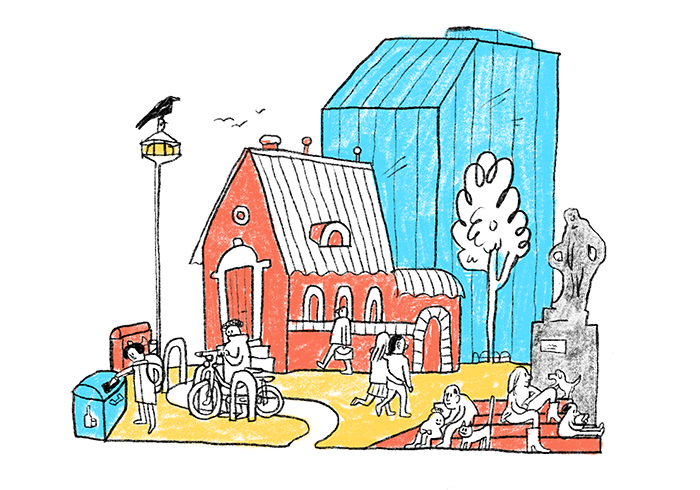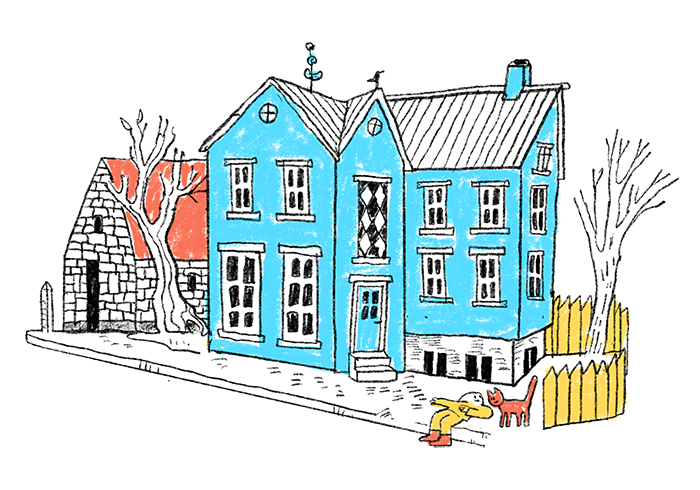My neighborhood

The city is constantly evolving. A neighborhood plan aims to allow established neighborhoods to grow and adapt to changing priorities while preserving their unique traits and character.
This approach helps us look to the future while protecting the spirit of each community—the heartbeat of every neighborhood.
Thriving neighborhood centers
Many neighborhood centers in Reykjavík's established neighborhoods boast vibrant commerce and services. However, some have seen better days. The goal of the neighborhood plan is to reinforce these cores, ensuring the broadest possible range of services is available within a comfortable walking distance for most residents.
Often, improving and beautifying the environment of these cores is necessary and, in some cases, increased construction permissions can strengthen the core. With new construction permissions, new dwellings can be created on upper floors or commercial spaces added, as neighborhood centers thrive best in dense areas where people's transportation methods vary.
City streets
Each neighborhood has defined city streets. City streets are key arteries within each neighborhood and are often the backbone of the region's commercial and service cores. They can also serve as important connections between different parts of the neighborhood.
The neighborhood plan emphasizes beautifying the city street environment and accommodating all modes of transportation. Detailed neighborhood plan provisions and guidelines for city streets aim to redesign streets and sidewalks to maximize tree planting, improve aesthetics of streets and paths, and prioritize pedestrians. Public spaces and neighborhood squares along these streets are also emphasized for resident use.
Redesigning city streets can transform the look of neighborhoods, strengthen community identity, slow down traffic, and enhance safety and living standards for residents. Situations vary across the city, and the execution of these changes can take many forms, but it's essential to try to preserve each neighborhood's unique characteristics.
Recycling drop-off points
There is a strong focus on increasing waste sorting and recycling. In the coming years, sorting requirements will likely become even more stringent, making it vital to ensure recycling drop-off stations are widespread and accessible.
Reykjavík's strategy is to have a recycling drop-off within walking distance for all city residents, and the neighborhood plan examines whether there's a need to add more stations or change locations. The plan tries to centrally locate recycling drop-offs in the neighborhood, possibly in conjunction with city street redesigns or near service cores. In such areas, the preference is usually to install underground containers, as they're a neater solution and take up less space on the surface than traditional recycling bins.
Underground containers
Underground containers are containers where part of the container, where the waste is collected, is underground, and the surface has a hatch used to discharge waste. In densely built areas, like by city streets and neighborhood centers with limited space, underground containers are a practical solution for a recycling drop-off point. They are also a cleaner option than traditional containers, more appropriate for the heart of the neighborhood.
Neighborhood plans also permit the installation of underground containers on multi-family residence and commercial property lots where conditions permit. Coordination with the offices of the Planning Officer and Environmental Quality at the Department of Environment & Planning in Reykjavík is required for the placement and arrangement of the containers.
Neighborhood preservation
To protect significant and important buildings, urban landscapes, historical artifacts, natural wonders, or others, the plan may call for neighborhood preservation. Neighborhood preservation is based on historical, cultural, or biological reasons and is designed to preserve the elements contributing to a neighborhood's uniqueness and shaping its image and spirit.
Conservation proposals in the neighborhood plan are based on a housing survey for each neighborhood conducted in preparation for the planning process. Building preservation is often a significant part of neighborhood plan conditions, whether it involves individual buildings or larger built-up areas. The provisions of the neighborhood plan detail what conservation entails, which may limit or prevent changes to buildings or other protected elements.
